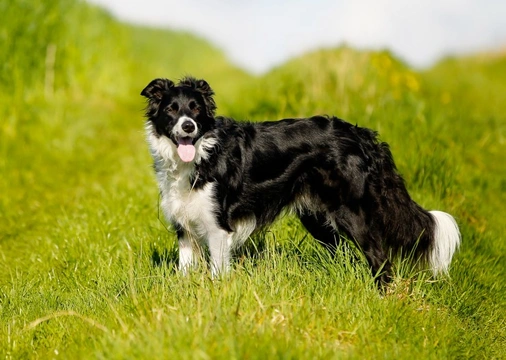Pets
Pets for studWanted petsBreedersAccessories & services
Knowledge hub
Support
Support & safety portal
Neuronal Ceroid Lipofuscinosis (NCL) in dogs
Neuronal ceroid lipofuscinosis (NCL for short) is the umbrella term given to a hereditary health condition that can affect a reasonably wide number of different dog breeds, and leads to a range of out of character behaviours and symptoms in affected dogs including hallucinations, fits, bouts of hyperactivity and potentially, out of character outbursts of aggression. As the condition progresses, affected dogs lose their coordination and muscle control, leading to stumbling, clumsiness and problems exercising normally.
Dogs that have inherited the affective form of the condition will appear to be normal and healthy when they are young, beginning to exhibit the first signs of the condition generally at the age of one or two. The condition cannot be reversed or cured in affected dogs, but it can be tested for; and because the disease is passed on from dog to dog via the breed line, testing prior to breeding means that affected dogs can be removed from the breeding programme, to prevent them passing the condition on to their offspring.
The British Veterinary Association and The Kennel Club oversee the UK testing scheme for the condition, and collate data on the results to map the progress or curtailment of the condition in affected breeds.
In this article we will look at neuronal ceroid lipofuscinosis in dogs in more detail, including what sort of dogs can be affected by the condition, how the heredity of the condition works, and how to get your dog tested. Read on to learn more.
More about neuronal ceroid lipofuscinosis
Neuronal ceroid lipofuscinosis is a type of lysosomal storage disease. The lysosomes are structures within the body’s cells that break down and recycle or eliminate unnecessary cellular components, as well as producing important enzymes that are necessary to complete the process.
The gene mutation that causes neuronal ceroid lipofuscinosis affects how well this process can be completed in affected dogs, and this leads to a build-up of potentially toxic chemicals in the cells, most notably the nerve (neuronal) cells. This in turn causes a progressive degeneration of the cells of the brain and eyes, resulting in the symptoms and behaviours outlined above, and generally, death at a young age.
What sort of dogs can be affected by the condition?
Neuronal ceroid lipofuscinosis has been identified in several popular dog breeds in the UK, including the Border collie, American Bulldog,Chinese crested, and Tibetan terrier. However, the condition is only considered to be prevalent enough to warrant pre-breeding screening in the Border collie and Tibetan terrier in the UK, although other breeds may be affected at a higher rate of incidence in other countries.
As well as the purebred breeds that can be affected by the condition (and for whom the Kennel Club monitors incidence rates of the condition across affected breeds) any cross-breed or hybrid dog that has ancestry from one of the affected breeds may also carry or be affected by the condition too.
How does the heredity of the condition work?
Neuronal ceroid lipofuscinosis is an autosomal recessive condition, which means that just inheriting the gene fault that causes the condition from one parent dog is not enough on its own to cause the condition to become a problem in the dog in question. Dogs are divided into three status categories for the condition; clear, carrier and affected, and different combinations of status in parent dogs will lead to different status combinations in their subsequent litters.
The basic heredity of the condition is as follows:
- Two clear dogs will produce clear puppies.
- Two affected dogs will produce affected puppies.
- Two carrier dogs will produce mixed odds for their litter-50% carrier, 25% affected and 25% clear.
- A clear dog and a carrier results in 50% odds for each puppy to be clear or a carrier.
- A carrier and an affected dog results in 50% odds for each puppy to be carriers or affected.
- A clear dog and an affected dog will produce all carriers.
How to get your dog tested
If you own a dog from one of the breeds that have been identified as having higher than normal chances of being a carrier of or affected by neuronal ceroid lipofuscinosis, it is really important to have them tested prior to breeding so that you can make an informed decision about the viability of any given match.
In order to have your dog tested, you will need to ask your vet to take a DNA sample from them in the form of a vial of blood or a buccal swab (a swab of the cells on the inside of the cheek of the dog) and then this is sent off to one of The Kennel Club’s approved laboratories for testing.
The test results are then returned to you as either carrier, clear or affected.



